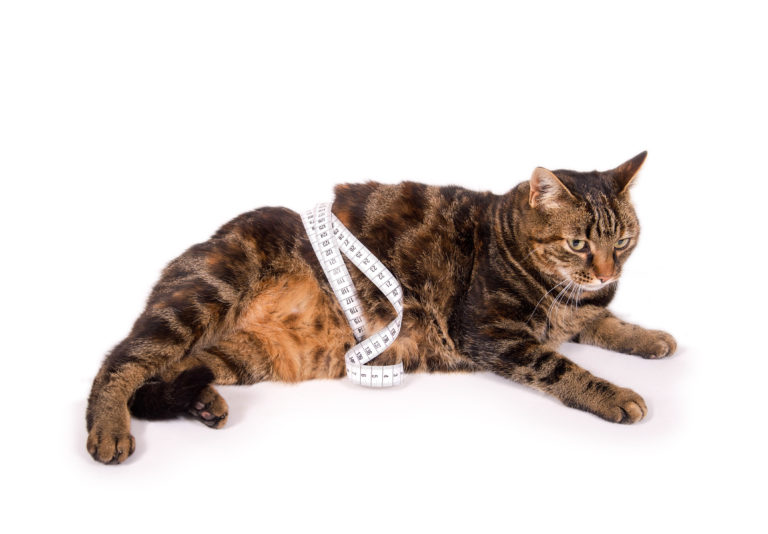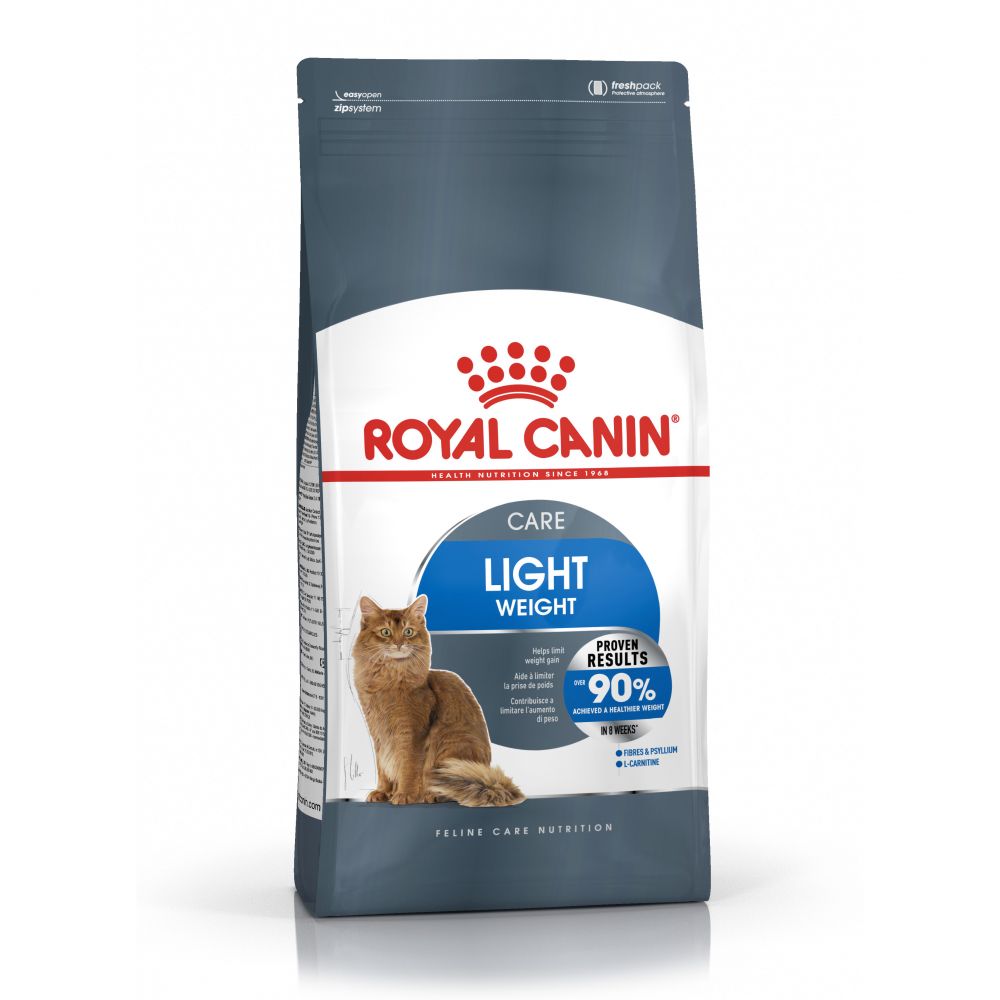How to Determine the Right Amount of Food for Your Cat
Some cats always seem to be hungry. But how much food does a cat need per day? This article helps you to find out the right amount of food for your cat.
It’s not just people who are becoming increasingly larger – our cats are suffering too! For this natural predator, normally so agile and flexible, being overweight can be just as dangerous as it is for humans. Too much feline flab overloads the joints, as well as disrupting the metabolism and creating a vicious circle: if you’re overweight you don’t want to move, and if you don’t move you gain more and more weight. But how exactly do you put your overweight cat on a “diet plan”?

© grafikplusfoto / stock.adobe.com
The lives our cats lead have changed drastically over the past few thousand years. Wild, free-roaming cats had to find their own food, meaning they were generally on their feet around the clock. However, our modern-day house cats struggle to find any true incentive to get up and get moving. After all, they have learnt by now that they can stay put on their cosy bed or in a snuggle den and we will ensure their food comes to them, often in excess. Many cat owners now leave out a constant supply of dry food that their cat can dip into whenever it so chooses, as well as offering a wet food meal every day. Is it any wonder that our cats are overweight?! But how do you recognise that your own cat is suffering?
You’ll find the suggested products in the video under the following links:
Royal Canin Light Weight Care (Dry Food), Concept for Life Light (Dry Food), Smilla Adult Light (Dry Food), Aumüller Wicker Den XXL, Donut Cat Tunnel, zoolove Cat Dangler
A good rule of thumb is to go by what you see:
You should be able to tell with the naked eye if your cat is severely underweight, as you will be able to see its ribs, vertebrae and pelvic bones protruding. They become quickly visible with drastic weight loss and, looking from above, your cat may also have a very defined, narrow waist. When you cat is at its ideal weight, you should be able to feel its ribs but not actually see them. The body shape should be recognisable, rather than coated in fat, and from above you should see a slight waist.
If your cat is overweight, its ribs will be hidden beneath a thick layer of fat. This fat around the large, round stomach will move around as your cat walks or runs, and there will be scarcely a waist left to recognise. If your cat has reached obesity, you will barely be able to find its ribs. Fatty tissue will conceal the waist entirely, with the flank and face becoming round. Your cat is also likely to be slow, cumbersome and adverse to excessive movement. It probably spends most of its days sleeping and, eventually, eating more and more. The ultimate vicious circle.
At this point, taking action is called for more than ever, as carrying excess weight can have devastating effects on your cat’s body. The first step is to ensure your feline is getting more exercise. Play with your cat and keep it animated with beautiful cat trees, danglers and even new toys or games that encourage it to get moving. They don’t have to be expensive, just simple and effective!
To ensure that your cat loses weight healthily, you should combine the new exercise regime with a well thought out nutrition plan. Proceeding with caution is a must: cats can have severe reactions if fat reserves are released too rapidly, meaning that a calorie-slash diet or just cutting the amount of food given is a big no. Radical loss of fat can cause a condition known as “hepatic lipidosis”, or a “fatty liver”. Another important factor to consider is that, although your overweight cat will need fewer calories, it will still need as many vitamins and minerals as thinner, more active cats. This means you will need to choose a specific food aimed at healthy weight loss, rather than merely halving your cat’s usual food intake, so that you can gently encourage gradual weight loss without compromising on your cat’s overall health.
Fortunately, the pet food market has recognised the need for this kind of food and offers a range of “light” products, specifically designed for helping overweight cats reach a healthier size. These foods are low in calories but still rich in vital nutrients, protecting your cat’s comprehensive health. They also contain additives such as the amino acid L-carnitine, which is known to have a positive impact on the metabolism and your cat’s ability to lose weight and burn fat. A balanced calcium-phosphorus ratio is also very important, helping to keep the correct balance of minerals in your cat’s body. This in turn can help reduce the risk of urinary or kidney stones building up. These foods also use high-quality protein sources, which keep your cat feeling fuller for longer.
But beware – “light” does not necessarily mean it’s good. Calorie-reduced cat food comes in all quality varieties, so rather than reaching for the nearest or cheapest “light” dish, take a minute to check the food nutrition label. Even when you’re feeding an overweight cat, you need to bear in mind that felines are carnivores and need plenty of high-quality animal protein in their diet. Carbohydrates should make up just a small proportion of the food, with meat at the top of the ingredients list as the most important nutritional component. Vegetable by-products and cereals should be minimal, as they merely increase the amount of non-usable carbohydrate that your cat is taking in, placing further strain on your cat’s organs. You also need to pay close attention to secondary ingredients such as “meat and animal by-products”, which may contain any animal parts or organs, including liver, spleen, hair and horn.
If you are really struggling to find the right food for your cat, speak to your veterinarian. They will be able to offer tips and advice about your cat’s nutrition, as well as establishing the extent to which your cat is overweight and helping to find the perfect gradual weight loss solution.
All the best to you and your overweight (for now!) cat!
 © Royal Canin
© Royal Canin
Give your cat tailored nutrition:
Some cats always seem to be hungry. But how much food does a cat need per day? This article helps you to find out the right amount of food for your cat.
Summer is the peak season for refreshing ice cream, and cats enjoy it too when it's hot. Would you like to surprise your cat with some ice cream for a change? We will clarify whether ice cream is dangerous for cats and show you how to make your own healthy cat ice cream.